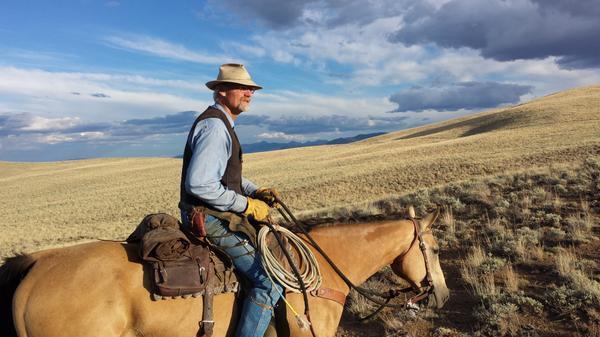 The thought of the desperate terror the residents of the Salmon River Country must have endured made my hands tight around the reins of my mare after my eyes had wandered, stopped, and fixed on the exposed soil layer that told the grisly tale as plain as day. The fact was that Italy’s Mt Vesuvius and Pompeii was a mere hiccup compared to the vast scope of devastation still evident in front of me today. My buckskin mare, Ginger, was oblivious to the sign on the landscape. She had just put her head down for a drink in the crystal-clear waters of Little Hat Creek as we rode up this part of our summer range on our way to cow camp.
The thought of the desperate terror the residents of the Salmon River Country must have endured made my hands tight around the reins of my mare after my eyes had wandered, stopped, and fixed on the exposed soil layer that told the grisly tale as plain as day. The fact was that Italy’s Mt Vesuvius and Pompeii was a mere hiccup compared to the vast scope of devastation still evident in front of me today. My buckskin mare, Ginger, was oblivious to the sign on the landscape. She had just put her head down for a drink in the crystal-clear waters of Little Hat Creek as we rode up this part of our summer range on our way to cow camp.
It was a cool and breezy July day as we rode up the canyon, and the dense willows and birches for the most part hid the channel of the creek. Lush vegetation waving in morning breezes yielded a deep sense of satisfaction, as just 10 years earlier I had ridden this same route and found stream banks in rough shape and most of the woody species of willow and aspen either absent or non-regenerating. It was cows that had caused degradation from the previous grazers of our range. Now, in just a decade, the fish and bird habitat that was rough shape was out of the ICU and even out of the hospital. After only 12 years on our range, the 50 miles of creek habitat was in upward trend and looking pretty good.
The only downside about the dense shrub cover was that it was now very easy to ambush a bear. It was just my horse and I, and we rode pretty quietly through the 5 miles of brush. Black bears are for the most part fearful, but could be unpredictable with their young cubs. Just last summer I had met a quite large bear about a quarter mile back whose large frame’s flesh shimmered and shone with fat like that of a grizzly bear (appropriately named Ursus arctos horribilis in Latin).
I was happy to see him beat feet for the hill above us, and that he was a male. Four years prior, I had met a large mom with 2 tiny cubs. Thankfully, she was long enough off and across the creek from me that she decided on leaving instead of attacking. Only one bear I had met up there seemed to consider possibilities. I was alone in upper Park Creek on my Morgan mare Missy, and brother bruin reared high on hind legs, and stood ground just 50 feet away, sniffing, tasting the air, as we stood our ground in the same meadow. Missy stared right back, and blew snot at the big ursine. It was enough—I guess he figured that mare and man were too much to finagle with that day, even though I wondered if he was tasting us in his mind.
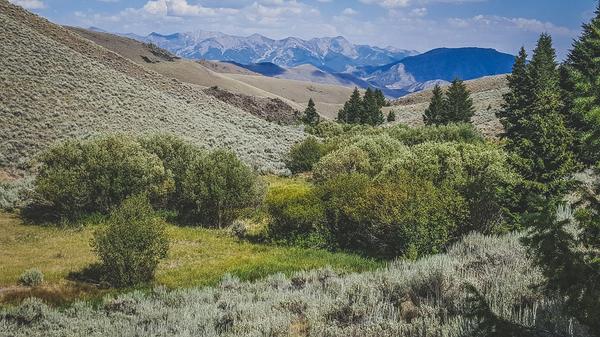
But now I need to get back to the signature soil formation that took my attention from bears and bushes to the cataclysmic past: it was an exposed bank of soil where Little Hat Creek had cut an 8 foot high chunk out of the hillside. All of the soil exposed in the vertical bank was a matrix of ancient volcanic ash and sagebrush and grass roots, but about 4 feet from the top, a 6 inch band of chalky white contrasted with the otherwise grey substrate. It was clearly different from all of the other soil. I had seen it before along road cuts where the highway or logging road had exposed mineral soil, and had noticed it ever since a geologist friend of mine, Terry, had told me the story years ago, back in 1988: “That layer is volcanic ash from Mount Mazama, one of the largest volcanoes in the Cascade Range near the Pacific Coast. Geologists determined by chemical composition that it could only have come from Mt. Mazama.”
I was a guy that had spent quite a bit of time in the mountains of the West, but had never heard of Mount Mazama. The name Mazama, however, did ring some bells for me. A number of years ago, Caryl and I climbed Borah Peak, the highest peak in Idaho, and found an aluminum box under the pile of rocks that formed a prominence on the small summit area.
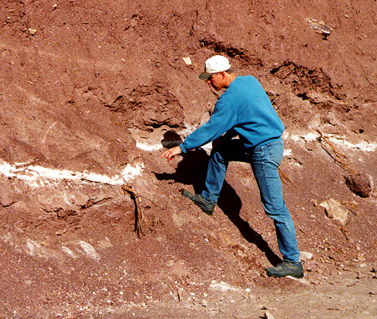
I uncovered the box, and opened the hinged lid that had “Mazamas” embossed on it. Inside were some pencils and a summit register log book with the names and dates and quips from hundreds of folks who had climbed the peak over nearly 20 years. I discovered later that the Mazamas were and still are a mountaineering club founded in 1894. Two years after that, in 1896, they met on the remains of what would they would call their namesake peak: Mt Mazama, an extinct and completely exploded volcano like Mt St Helens. It is not really a peak. Mount Mazama is now known as Crater Lake in Oregon’s Cascade Range. It is 424 air miles from the spot where Ginger and I were standing in Little Hat Creek.
Mt Mazama used to be one of the highest peaks in the entire Cascade Mountain range, but over several days, erupted and exploded, sending up a plume of ash estimated to be 42 times more than the volume put out by Mt St Helens in 1980. It sent ash in the air that blanketed the entire northern Rockies with 5 to 10 feet of gritty ash. Over the many years since, much of the ash washed, blew or compressed to form that 6 inch white line that I observed in the side cut along Hat Creek. The year of the ash cataclysm: 5677 BC.
It’s the juxtaposition of all that ash with life on Earth that I wonder about. All paleontological records are fairly consistent that humans had colonized most of North America by 8000 BC. So I put 2 and 2 together and it means that Native Americans were living in Idaho then. They were there when 5 feet of gritty volcanic ash covered the landscape in just several days. Nearly everything died, except perhaps the occasional tree. There was simply nothing to eat. Grasses and forbs were covered. Small game starved and were buried alive. They likely asphyxiated in the dense particulate that fell from the sky or died soon afterwards.
I remember when St Helens erupted in 1980. People wore dust masks in Idaho, Oregon and Washington for days. They were avoiding breathing in the glass-like particles of volcanic ash which could slice the fragile inner tissues of one’s lungs to pieces. There’s even a term for it, and it just so happens to be the longest word in the English language, according to the Oxford Dictionary: Pneumonoultramicroscopicsilicovolcanoconiosis, referring to the chronic lung disease that follows after inhaling the silica (you could call it glass) in volcanic fly ash. There were no dust masks or even permeable fabric in prehistoric Native American days. When Mazama erupted, times got really tough.
As Ginger lifted her dripping mug from the creek, I came out of my nightmare reverie and looked up the canyon at the willows and aspens, trembling in the morning breeze. The azure of the blue skies completed the picture of quiet; all was right in the world. Indeed, the grasses we harvest with our beeves along with the elk and deer are founded on the mineral density of Mazama’s ash. They are in fact eating it, and so in sense, are we.
Our belief and short term experience of a static equilibrium in nature, even on our wild ranges, is in fact a delusion. Just one look by a trained eye over our mountainous landscape clearly shows evidence of changes, some cataclysmic. Nature absolutely will not submit to our plans; it is hubris to think otherwise. Natural fury by the likes of fire and flood unleashed time and time again in the past proves this to be true. We are not in charge of nature. Mount Mazama is extreme, but nature throws unexpected things our way all the time. In my relatively short span of a few decades in this place, I’ve seen huge floods, droughts, and wildfires covering hundreds of thousands of acres. We can’t control these things. The best we can do is enjoy the ride.
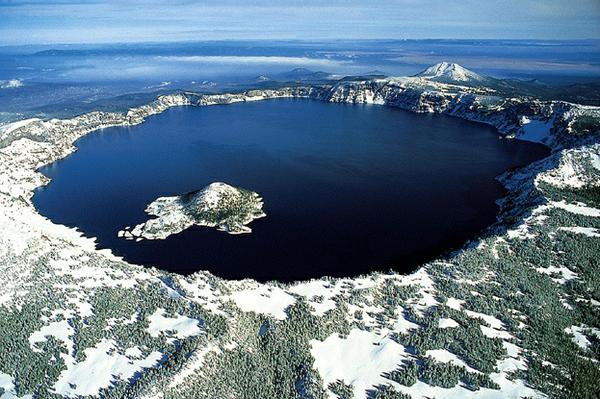
It’s why I have a foundational disagreement with the direction modern agriculture continues to move. Simple ecological systems are more flexible and adaptable to nature’s challenges. Healthy soil holds more water when lots of rain comes, and stays moist longer in a drought. Natural fertility from the symbiosis of animals, plants, sunlight, and soil biota is constantly adapting. Chemical, genetic and mechanical engineering replace nature’s elegant biological functionality by selling the farmer chemical soil amendments, pesticides and GMO seeds. Huge machines replace the innate abilities of animals and even humans to husband life from the soil. The ag magazines say our life is easier with such mechanized marvels, but I see it is in actuality more complex. To me, there is nothing so simple as a cow on a diverse sward of native grass, harvesting sunlight and nutrition from living soils. I am there to facilitate that relationship. I ensure their continued supply of goodness by moving them and feeding the green goodness in the winter. I provide for their safe keep, so they are not stressed. And, in return, they have more lessons for me. I watch and learn.
Don’t get me wrong; we embrace technology. We use electric fence. We have center pivot irrigators to keep more water in the river for endangered fish. We sell beef on the internet. But we test those to make sure they fit with our vision of health for the soil, the animals, the plants, and the customers we partner with. I get a magazine or a fancy card ad nearly every day in the mail touting the newest technological innovation to be bigger, faster, or more efficient. But in my experience, these new technologies bring a host of new problems, most of which I don’t really enjoy fixing.
Case in point: We had to borrow a large, late model John Deere 7630 tractor from a neighbor this last month. Our ancient, open seated (no cab; metal seat) Allis-Chalmers 1970s tractor broke a wheel off and lay derelict in the middle of the snowdrifted meadow it died in. We had been using it to move 1 ton bales of hay around and plow snow on the ranch. But Allis was dead, and Deere took its humble place. Indeed the big green John Deere seemed easier; it sported fingertip controls, a great heater, ergonomically designed seat, and a cd player with surround sound. The tight cab hermetically sealed Josh, Ethan and I from 20 below zero winds as we scraped out snow along our long road to the house (even at night—it had lights so you could work all night!). You could sit up in that glass bubble in a T-shirt listening to Waylon and Willie. Plowing snow at night was otherworldly. I felt like I was piloting some lunar rover on the dark side of the moon.
It was really nice until it stopped working.
A digital readout on the LCD screen said that the “PTO relay circuit defective.” Unlike my ancient Allis, which I can usually fix with some creative welding and rigged parts, I had no clue how to fix it. The John Deere dealer from over an hour away had to come out and troubleshoot with a computer until the problem was finally solved and a tiny fuse replaced (I didn’t even know where to look). It was expensive. My parts for my ancient Allis finally arrived from a tractor salvage dealer in Montana; we were able to fire up old and simple Allis (we call it “Pumpkin” because of its trademark color of orange). It was not expensive. Once Pumpkin was back to life, we promptly brought the fixed and luxurious Deere back to the neighbor with a full tank of fuel. I was relieved.
I could never have enough work for such a machine as this. They cost too much to own and maintain; it would be a money pit as soon as we drove it off the dealer’s lot. Instead, much of what we do involves animals. Horses often carry us and loads of hay on wagons out to beeves in the winter. In the growing season, much of our grass is harvested directly by cows. It’s why we contract neighbors to cut our 300 acres of hay with their big tractors; they are only on our place for 2 weeks a year. But they must keep the big wheels rolling on thousands of other acres for the entire growing season that they custom cut to cash flow for their iron investment. In agriculture today, it is all about go big or go home.
We’ll choose home. And continue to walk in the beauty of animals—the real employees on Alderspring—working on their harvest of pristine landscapes. The fertility we walk on may have originated from the likes of Mazama, but until she blows her top again, we’ll harvest the bounty. I’m glad you can join us.
Glenn, Caryl , Girls and Cowboys at Alderspring

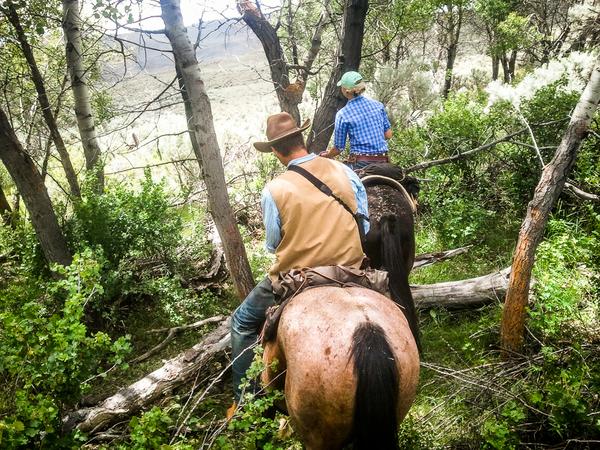
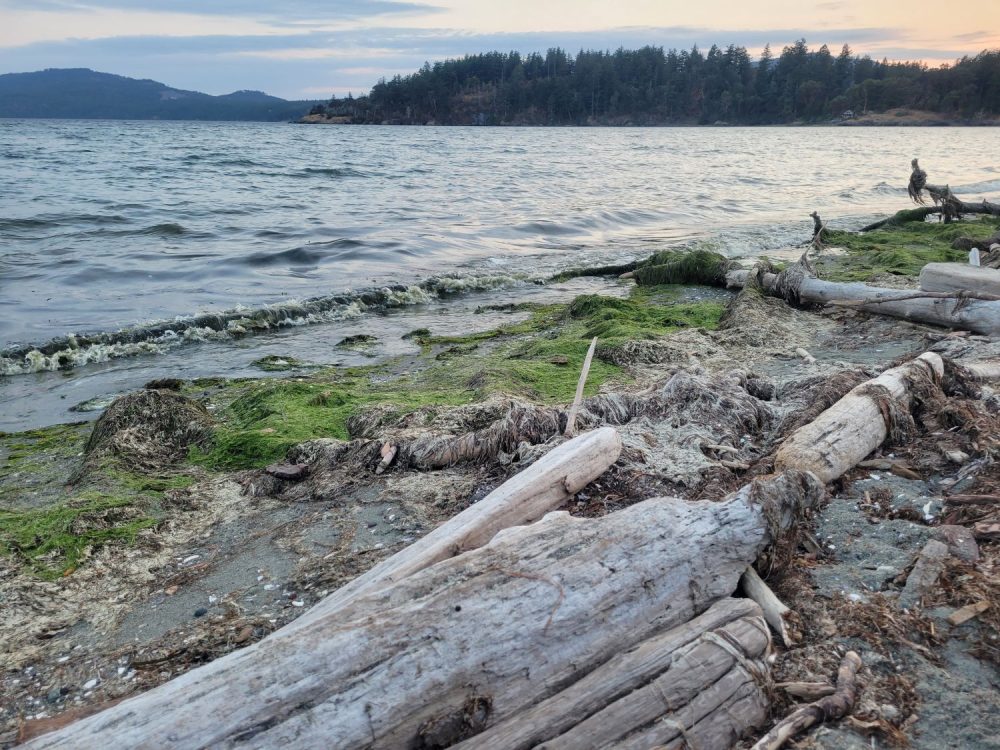


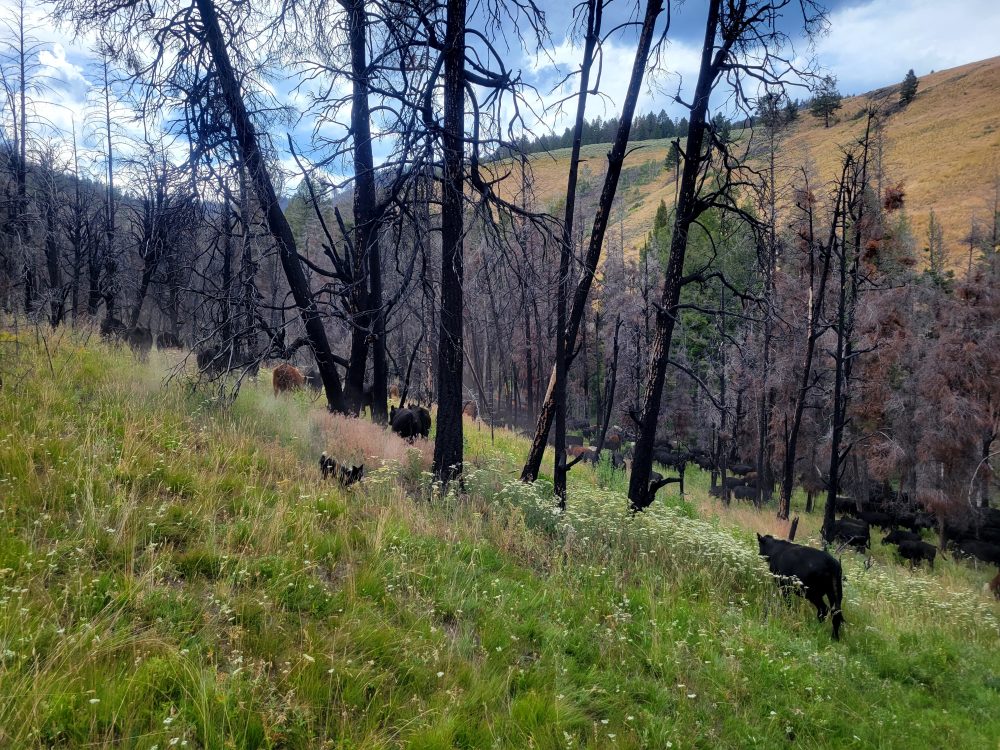

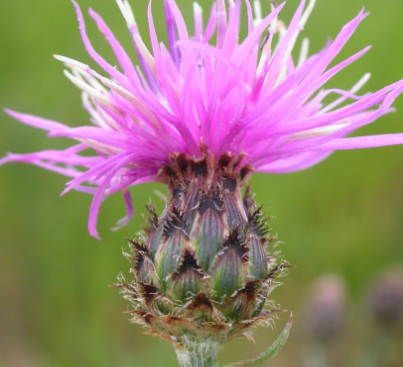
Leave a Reply